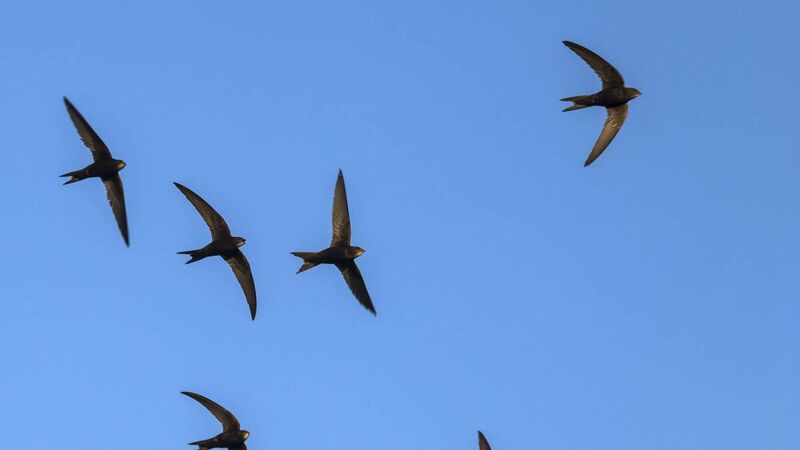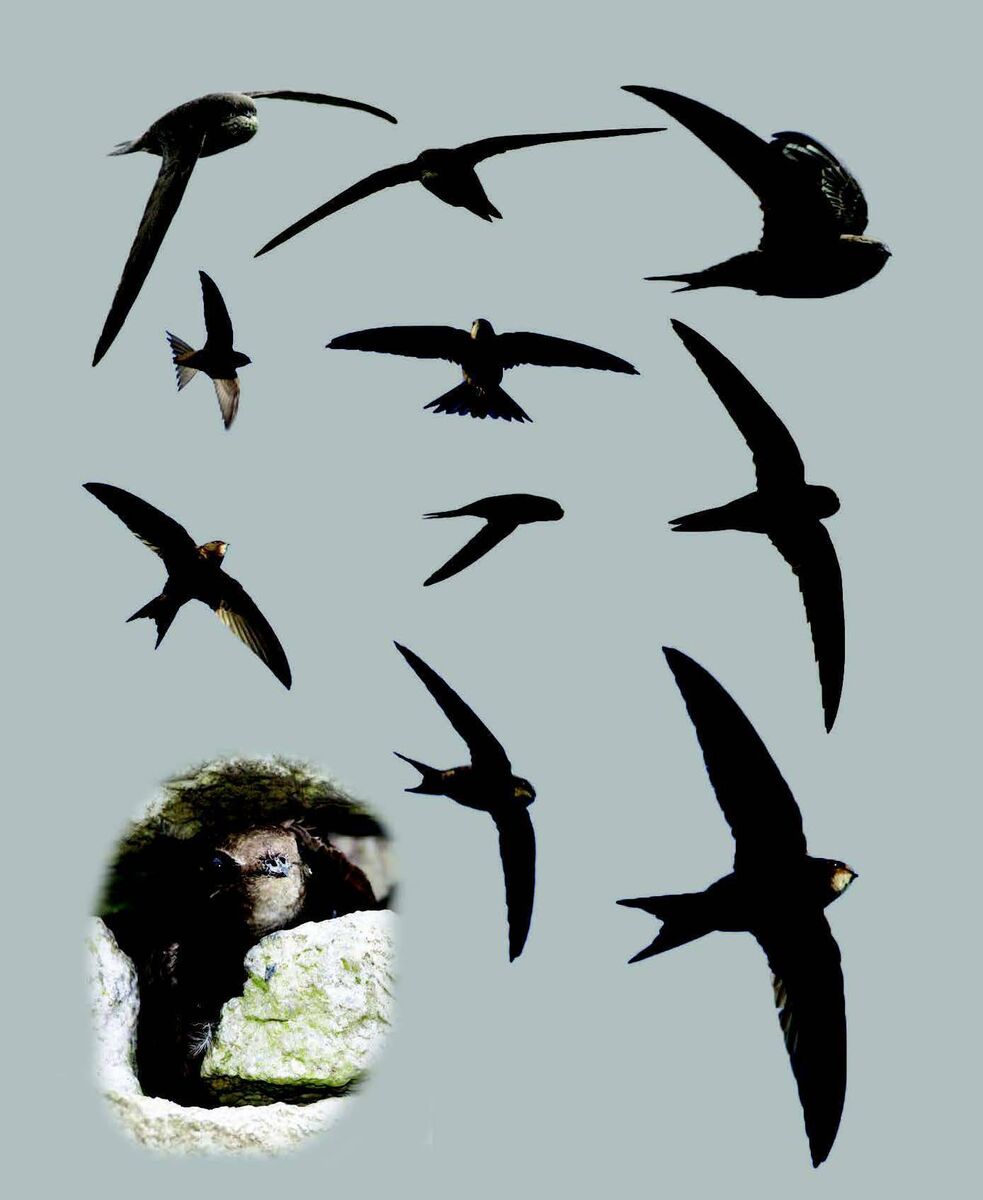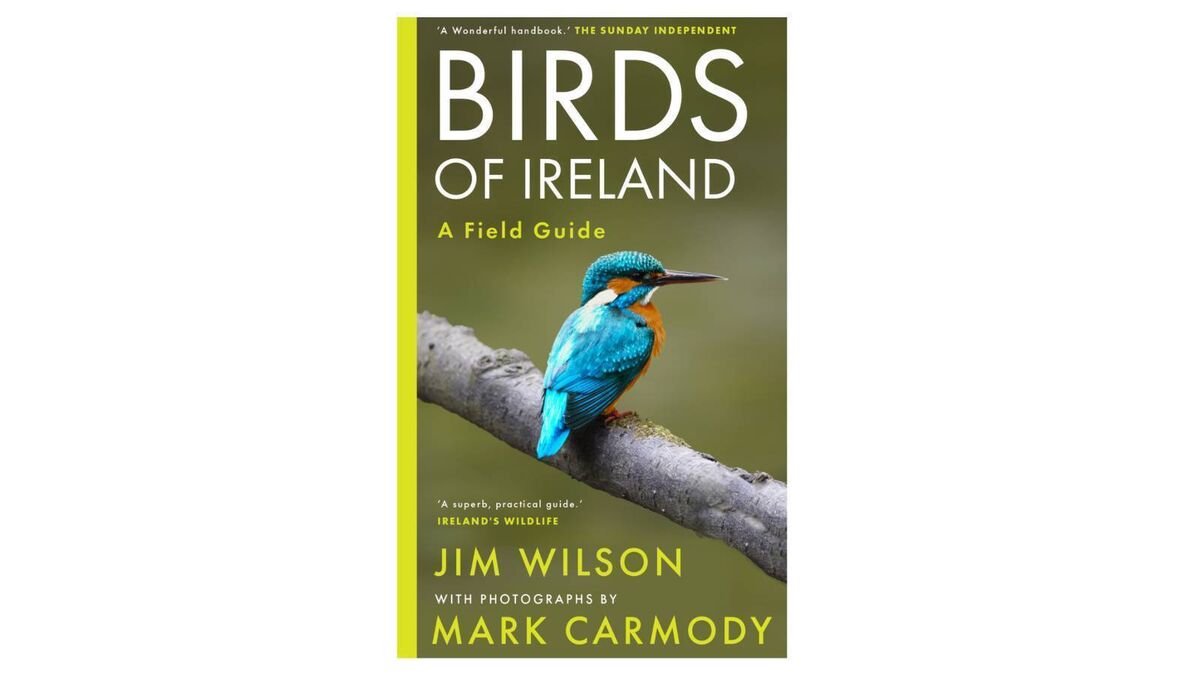Birds of Ireland: Swift

The swift catches its staple diet of insects by flying quickly through the air with its large mouth open, each bird catching tens of thousands of insects each summer
Swifts are around 16-17cm long with a wingspan of 42-48cm They are a common breeding species typically seen here in spring, summer and autumn in farmland and urban and suburban areas.
A swift is smaller/slimmer than a starling. Both sexes look similar with a tiny, dark beak; short,and dark legs. They are rarely seen on ground — and occasionally cling to walls. Swifts nest inside cavities, usually under eaves of buildings.

In flight adult swifts appear all dark except for their pale throat which is visible only at close range. They have a short, forked tail, which looks pointed when closed, and have long, sickle-shaped wings.
Swifts have rapid wingbeats and often gather at dusk in large, noisy groups, high in the sky, sometimes heard but not seen.
In flight juveniles and immature swifts have fine, pale barring visible on their bodies.
A distinctive sound of summer is a group of swifts, screaming with high-pitched, buzzing calls, speeding low over houses/streets.

While not closely related to swallows and martins, swifts share their aerial existence and are members of a group of birds that spend almost all their life on the wing and are summer visitors to Ireland from Africa.
They come here only to lay their eggs and rear their young in cavities under the eaves of big buildings. They are so adapted to an aerial existence that they cannot take off from level ground or perch on a wire or twig. Their tiny feet and claws are designed for clinging onto vertical surfaces.
Like the other members of this group, the swift catches its staple diet of insects by flying quickly through the air with its large mouth open, each bird catching tens of thousands of insects each summer. The swift is one of the latest of our summer migrants to arrive in Ireland and earliest to depart after breeding.







